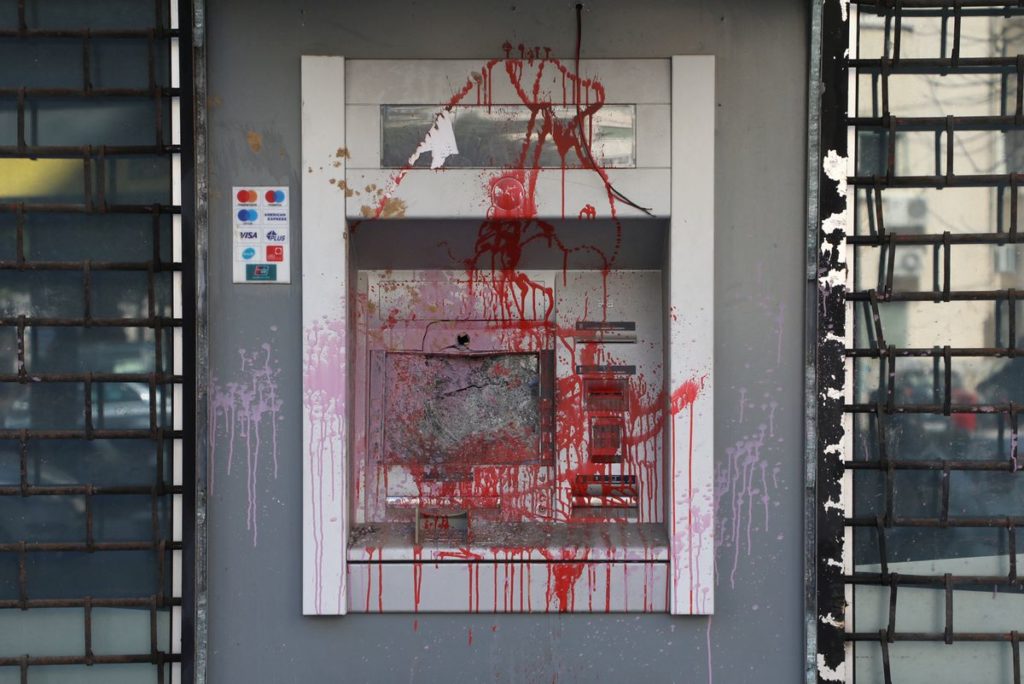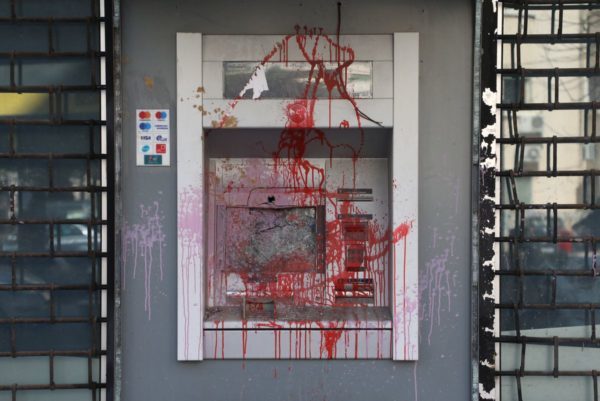
By Edmund Blair
Summary
- Unfettered spending after war brought nation to its knees
- Gulf states withdrew support as Iran’s influence increased
- Political paralysis, infighting have hampered recovery
- Middle East turmoil, Beirut blast added to pressures
Jan 23 (Reuters) – Lebanon is grappling with a deep economic crisis after successive governments piled up debt following the 1975-1990 civil war with little to show for their spending binge.
Banks, central to the service-oriented economy, are paralysed. Savers have been locked out of dollar accounts or told that funds they can access are now worth a fraction of their original value. The currency has crashed, driving a swathe of the population into poverty. read more
WHERE DID IT GO WRONG?
Lebanon’s financial collapse since 2019 is a story of how a vision for rebuilding a nation once known as the Switzerland of the Middle East was derailed by mismanagement as a sectarian elite borrowed with few restraints.
Downtown Beirut, levelled in the civil war, rose up, with skyscrapers built by international architects and swanky shopping malls filled with designer boutiques that took payment in dollars or Lebanese pounds.
But Lebanon had little else to show for a debt mountain equivalent at the time to 150% of national output, one of the world’s highest burdens. Its electricity plants can’t deliver 24-hour power and Lebanon’s only reliable export is its human capital.
HOW DID IT BORROW SO MUCH?
Some economists have described Lebanon’s financial system as a nationally regulated Ponzi scheme, where new money is borrowed to pay existing creditors. It works until fresh money runs out. But how did the nation of about 6.5 million people get there?
After the civil war, Lebanon balanced its books with tourism receipts, foreign aid, earnings from its financial industry and the largesse of Gulf Arab states, which bankrolled the state by bolstering central bank reserves.
One of its most reliable sources of dollars was remittances from the millions of Lebanese who went abroad to find work. Even in the 2008 global financial crash, they sent cash home.
But remittances started slowing from 2011 as Lebanon’s sectarian squabbling led to more political sclerosis and much of the Middle East, including neighbouring Syria, descended into chaos.
Sunni Muslim Gulf states, once reliable supporters, started turning away because of the rising influence in Lebanon of Iran, via Hezbollah, a heavily armed Lebanese Shi’ite group whose political power has grown.
The budget deficit rocketed and the balance of payments sank deeper into the red, as transfers failed to match imports of everything from staple foods to flashy cars.
That was until 2016, when banks began offering remarkable interest rates for new deposits of dollars – an officially accepted currency in the dollarised economy – and even more extraordinary rates for Lebanese pound deposits.
Given the Lebanese pound had been pegged to the dollar at 1,500 for over two decades and could be freely exchanged at a bank or by a supermarket cashier, what was there to lose?
Dollars flowed again and banks could keep funding the spending.
HOW COULD BANKS OFFER SUCH HIGH RETURNS?
Lebanon was still politically dysfunctional and rivalries had left it without a president for most of 2016.
But the central bank, Banque du Liban, led by former Merrill Lynch banker Riad Salameh since 1993, introduced “financial engineering”, a range of mechanisms that amounted to offering banks lavish returns for new dollars. It was a tactic bankers say might have been appropriate if it was followed swiftly by reforms – but not if, as was the case, not enough happened.
Improved dollar flows showed up in climbing foreign reserves. What was less obvious – and is now a point of contention – was a rise in liabilities. By some accounts, the central bank’s assets are more than wiped out by what it owes, so it may be sitting on big losses.
Meanwhile, the cost of servicing Lebanon’s debt surged to about a third or more of budget spending.
WHAT TRIGGERED THE COLLAPSE?
When the state needed to rein in spending, politicians splurged on a public sector pay rise before the 2018 election. And the government’s failure to deliver reforms meant foreign donors held back billions of dollars in aid they had pledged.
The final spark for unrest came in October 2019 with a plan to tax WhatsApp calls. With a big diaspora and Lebanon’s low tax regime skewed in favour of the rich, slapping a fee on the way many Lebanese kept in touch was disastrous.
Mass protests, driven by a disenchanted youth demanding wholesale change, erupted against a political elite, including ageing militia leaders who thrived while others struggled.
Foreign exchange inflows dried up and dollars exited Lebanon. Banks no longer had enough dollars to pay depositors queuing outside, so they shut their doors. The government also defaulted on its foreign debt.
The currency collapsed, sliding from 1,500 to the dollar before the crisis, to a street rate of about 23,000 in late January 2022, after hitting 34,000 earlier in the month.
Compounding problems, an explosion in August 2020 at Beirut port killed 215 people and caused billions of dollars of damage.
After a rapid economic contraction, government debt by some estimates was 495% of gross domestic product in 2021 – far more than levels that crippled some European states a decade ago.
WHAT HAPPENS NOW?
France has been leading international efforts to push Lebanon to tackle corruption and implement reforms demanded by donors. A new government was formed in late 2021, promising to revive talks with the International Monetary Fund. It has yet to implement any significant reform policies.
Crucially, politicians and bankers need to agree on the scale of the vast losses and on what went wrong, so Lebanon can shift direction and stop living beyond its means.
REUTERS

Leave a Reply
You must be logged in to post a comment.